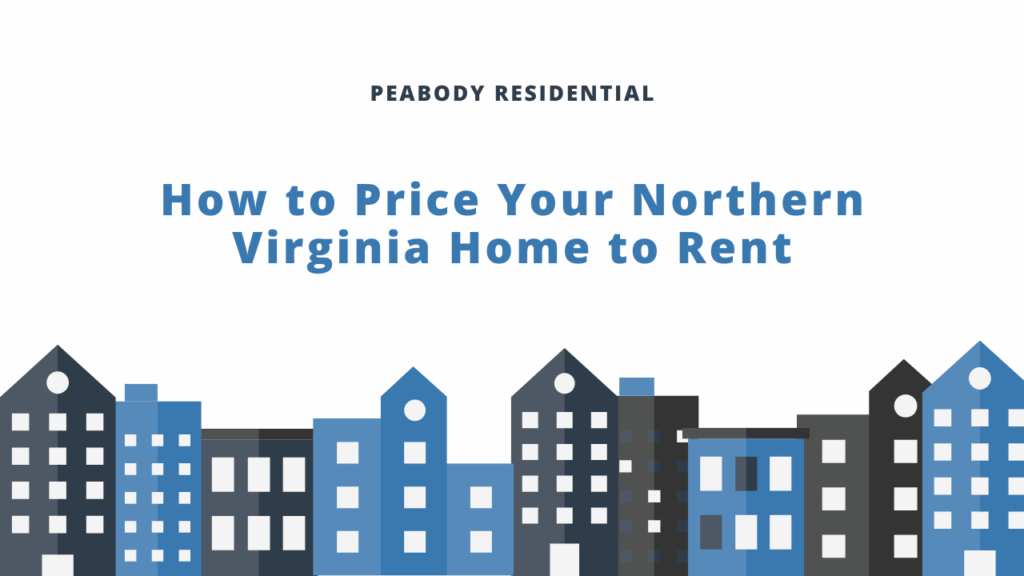Key Takeaways
- Set your rent close to comparable properties to attract residents quickly.
- Review nearby listings and historical data to understand pricing trends.
- Use MLS (Multiple Listing Service) for accurate information on actual lease rates and time on market.
- The right pricing strategy keeps your investment profitable and occupied.
If you own a home in Northern Virginia that you’re planning to use as a rental property, one of the questions you might have on your mind is how much you can rent the home for. This is an important question for new investors or experienced property owners who are new to this area.
When your rental rate is set too high, it may take longer to find the right resident. If the property is priced lower than the market, it will fill quickly, but that can limit your cash flow from the investment.
That’s why it’s best to find the ideal balance between competitive and profitable. This guide by Peabody Residential will help you with everything you need to know.
Get Your Free Rental Analysis Today!
How to Price Your Northern Virginia Rental Property
Rent in Northern Virginia can be comparatively high—often $2,500 or more per month for a single-family home. This is mainly due to the area’s vibrant economy, high quality of life, and proximity to Washington, D.C., and major employers. These factors create strong demand for rental properties and contribute to higher housing prices.
To set a competitive rental rate for your property, look at how much other property owners in the area are charging for homes similar to yours. This means narrowing down your research to homes that share common features and are in a similar condition to yours.
Some of the important factors to consider when making this comparison include:
- Property type: Is your property a townhouse, condo, garden-style apartment, duplex, single-family home, or detached house?
- Bedrooms: How many bedrooms does it have?
- Bathrooms: How many showers, full baths, and half baths does the property have?
- Square footage: Homes with more livable space naturally attract a higher rent.
Using Online Tools
To complete your analysis, you can use online services like Zillow, Apartments.com, MLS (Multiple Listing Service), or a local real estate site.
- Local real estate sites: A great place to begin your research is on local property listing sites, preferably the same ones where you plan to list your property. Search as if you are a resident looking for your next home. Focus only on homes that match your property and are near your location.
- Zillow and similar sites: On the Zillow website, go to the rent estimate calculator (a quick Google search will take you there) and enter the details of your rental property. While the estimates you get from Zillow are not exact since they don’t consider every feature and condition, they provide a helpful starting point.
These two methods show what property owners are asking for their rental properties. However, they do not reveal whether residents are paying those rates or how long a property remained available before leasing.
They also don’t provide access to historical rent data for the area. Historical data offers a valuable overview of how rental rates have changed and how they respond to local and regional developments.
Using the MLS Website
A third and more comprehensive option is the MLS (Multiple Listing Service) site. This tool allows you to refine your search by adding details that you cannot enter on Zillow or local real estate sites. With MLS, you can review rental rates for comparable properties in your area going back several years.
In addition to providing detailed rental data based on size and property features, the MLS site shows the actual rental value—what homes were leased for, not just listed at.
The MLS website also provides information about how long a property stayed on the market before it was rented. By comparing rental rates and time on the market, you can gain a clear sense of which homes were priced effectively and leased quickly.
Only registered real estate agents can directly access the MLS database or list a property there. Still, property owners have several ways to benefit from this valuable data:
- Hiring a discount broker: These real estate professionals handle part of your transaction for a percentage-based fee. While many specialize in home sales, they can also help set rental rates.
- Hiring a flat-fee agent: Unlike discount brokers, flat-fee agents charge a one-time fee rather than a commission after the property is rented.
Bottom Line
Pricing your Northern Virginia rental home correctly is one of the best ways to protect your investment and ensure lasting success. Finding that balance between competitive and profitable rent keeps your property occupied and your cash flow strong.
Peabody Residential offers a free rental price analysis for property owners throughout Northern Virginia. In addition to helping you determine a fair rent for your home, we provide insights that simplify property management and support consistent occupancy.
Partner with us to ensure your rental strategy works effectively and keeps your property performing at its best.




